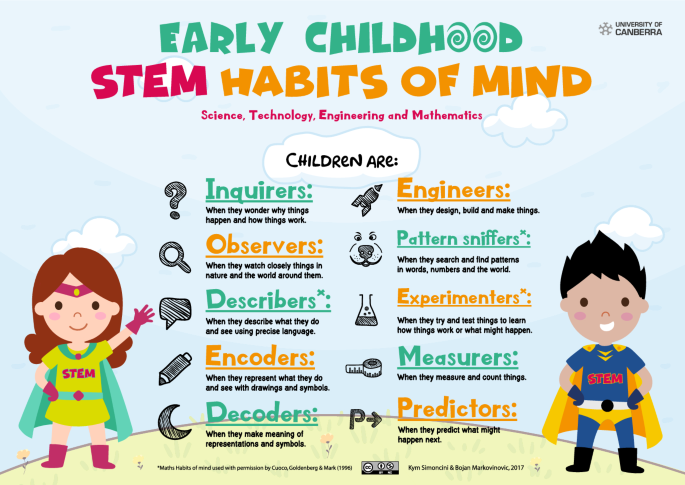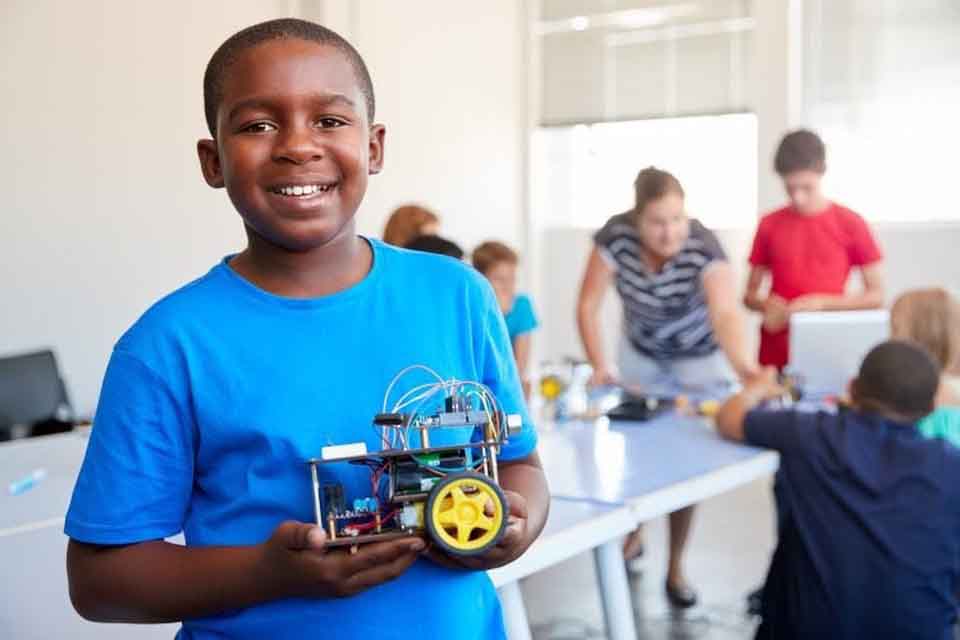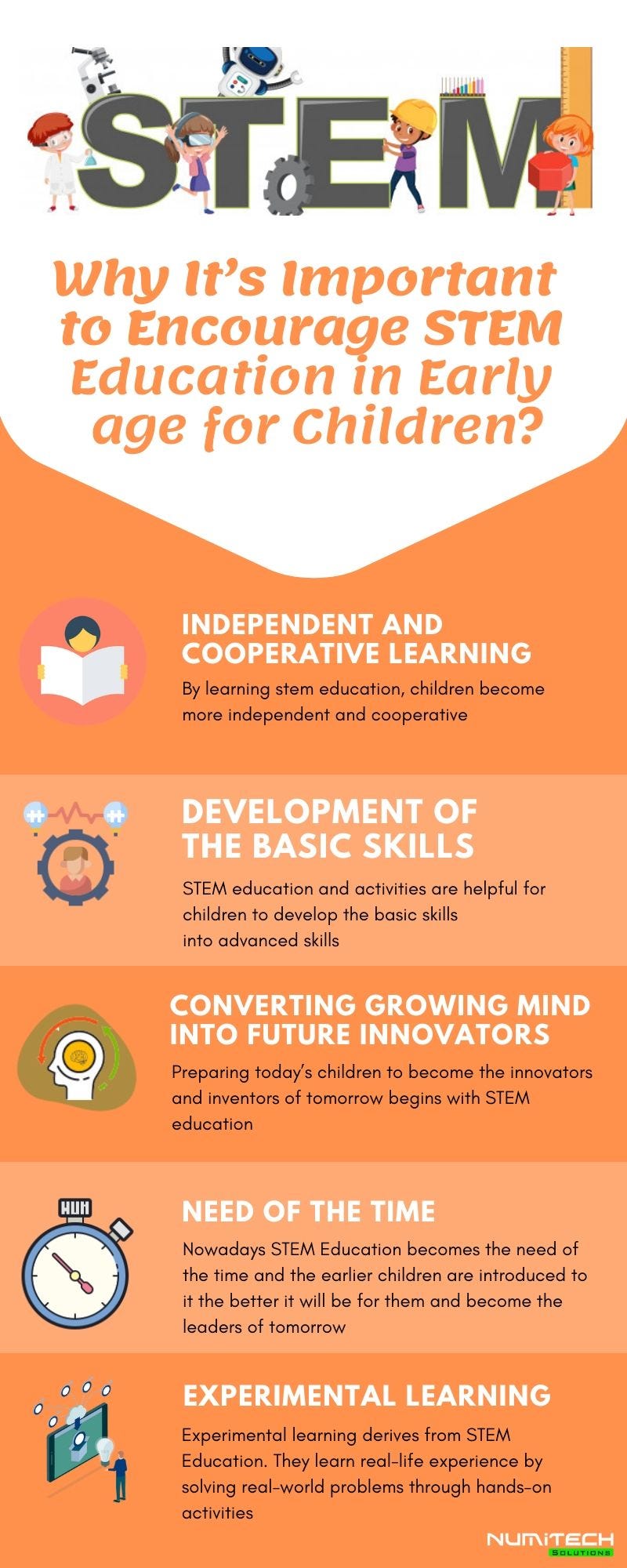Why Early Childhood Education Needs STEM: The Importance

Stem is important in early childhood education as it fosters critical thinking and problem-solving skills. It also promotes creativity and innovation.
In today’s rapidly evolving world, providing young children with a strong foundation in STEM (Science, Technology, Engineering, and Mathematics) education is crucial. By introducing STEM concepts early on, children develop essential skills such as critical thinking, problem-solving, and creativity. These skills not only prepare them for future academic success but also for the demands of the ever-changing workforce.
STEM education encourages curiosity, experimentation, and collaboration, setting the stage for lifelong learning and career opportunities. Investing in STEM education in the early years cultivates a generation of innovative thinkers and problem-solvers, shaping the future of our society.
The Impact Of Early Childhood Education
Early childhood education plays a crucial role in shaping the future of children. The impact of early childhood education goes beyond the classroom, influencing various aspects of a child’s development, including brain development and social skills. Understanding the importance of early childhood education, especially in the STEM field, is essential for nurturing well-rounded individuals who are equipped to thrive in an ever-evolving world.
Brain Development
Early exposure to STEM subjects in childhood aids in enhancing cognitive abilities such as problem-solving, critical thinking, and creativity. Engaging in hands-on STEM activities at an early age stimulates neural connections and fosters a foundation for lifelong learning. Research has shown that children who receive quality STEM education in their early years exhibit improved memory retention and information processing skills.
Social Skills Development
Incorporating STEM education into early childhood curriculum promotes collaboration, communication, and teamwork. Through group projects and experiments, children learn to share ideas, listen to others, and work collectively to achieve common goals. These experiences not only foster a sense of community but also lay the groundwork for effective interpersonal skills that are vital for success in the future.
Introduction To Stem In Early Childhood Education
Introducing STEM (Science, Technology, Engineering, and Mathematics) in early childhood education is crucial for fostering a strong foundation in these disciplines. Early exposure to STEM concepts ignites children’s curiosity, encourages problem-solving skills, and lays the groundwork for future success in these fields. In this section, we will explore the significance of integrating STEM in early education and delve into what exactly constitutes STEM education.
What Is Stem?
STEM encompasses four key disciplines: science, technology, engineering, and mathematics. It focuses on integrating these subjects to create a cohesive learning paradigm that encourages real-world applications, critical thinking, and innovation. STEM education aims to prepare young learners for the challenges of the future by nurturing their analytical and creative abilities.
Why Integrate Stem In Early Education?
Early childhood is a critical period for cognitive development, and introducing STEM at this stage can cultivate a natural inclination towards inquiry and exploration. By integrating STEM into early education, children can develop a strong foundation in logical reasoning, problem-solving, and technological literacy, which are essential skills for navigating the modern world.
Benefits Of Stem In Early Childhood Education
STEM (Science, Technology, Engineering, and Mathematics) education is crucial in the early years of a child’s development. It offers a wide range of benefits, helping children to develop critical thinking skills, problem-solving abilities, and creativity enhancement. The integration of STEM in early childhood education plays a vital role in shaping young minds and preparing them for the challenges of the future.
Critical Thinking Skills
STEM activities foster critical thinking by encouraging children to analyze, evaluate, and make decisions. Through hands-on experiences and experimentation, children learn to question, investigate, and draw conclusions, laying a strong foundation for logical reasoning and sound judgment.
Problem-solving Abilities
STEM education equips children with problem-solving skills by presenting them with real-world challenges and encouraging them to explore various solutions. This approach nurtures resilience and adaptability, enabling children to tackle problems with confidence and creativity.
Creativity Enhancement
Engaging in STEM activities sparks creativity as children are encouraged to design, build, and innovate. By exploring different possibilities and expressing their ideas, children develop a strong sense of imagination and originality, fostering a lifelong passion for innovation.

Credit: www.researchgate.net
Challenges In Implementing Stem In Early Childhood Education
Implementing STEM in early childhood education comes with its own set of challenges. Overcoming these challenges is crucial to ensuring that young children have access to valuable STEM learning experiences that can shape their future. From the need for appropriate teacher training to ensuring access to necessary resources, there are several hurdles that educators and institutions must address in order to effectively integrate STEM into early childhood education.
Teacher Training
Effective teacher training is essential for the successful implementation of STEM in early childhood education. Educators need to be equipped with the knowledge and skills to integrate STEM concepts into their teaching practices. This requires ongoing professional development programs that focus on STEM pedagogy and hands-on learning experiences. Without proper training, teachers may struggle to create engaging and effective STEM activities for young children.
Access To Resources
Access to resources is another significant challenge in implementing STEM in early childhood education. Schools and childcare centers need to have adequate supplies, materials, and equipment to support hands-on STEM activities. This includes items such as building blocks, science kits, art supplies, and technology tools. However, limited budgets and lack of awareness about the importance of these resources can hinder the availability of necessary materials for STEM learning.
Engaging Young Learners In Stem
Engaging Young Learners in STEM is crucial for their early development. By introducing them to Hands-On Activities and Incorporating Technology, we can ignite their curiosity and foster a love for learning.
Hands-on Activities
Hands-on activities are vital in early STEM education as they allow children to explore, experiment, and learn through direct interaction. By engaging in activities like building structures with blocks or conducting simple science experiments, young learners develop critical thinking skills and a deeper understanding of STEM concepts.
Incorporating Technology
Integrating technology into STEM education can enhance the learning experience for young children. Interactive apps, educational games, and online resources can make complex concepts more accessible and engaging. By utilizing technology, we can make learning fun and interactive, preparing children for the digital world they will grow up in.
Success Stories Of Stem Integration In Early Education
Discover the impact of STEM integration in early education through inspiring success stories. Explore the significance of STEM in shaping young minds and fostering critical thinking skills from an early age. Uncover the benefits of incorporating STEM education in early childhood development for a brighter future.
Incorporating STEM (Science, Technology, Engineering, and Math) into early childhood education has become increasingly important in recent years. With technology advancing at an unprecedented rate, it’s essential that children are exposed to STEM concepts from a young age to prepare them for the future job market. While some may question the value of teaching these subjects to young children, there are many success stories that demonstrate the positive outcomes of STEM integration in early education. Let’s take a closer look at some of these success stories through case studies and examples of positive outcomes.Case Studies
One case study that highlights the benefits of STEM integration in early education is the HighScope Perry Preschool Study. This study followed a group of preschoolers who received a high-quality, play-based education that emphasized STEM concepts. The results showed that these children were more likely to graduate from high school, attend college, and have higher earnings in adulthood compared to those who did not receive this type of education. Another case study is the work of the Boston Public Schools, which implemented a STEM curriculum in their early education programs. The program focused on hands-on learning experiences and problem-solving activities, resulting in higher engagement and interest in STEM subjects among students. Additionally, the program led to increased teacher confidence in teaching STEM concepts, which is essential for effective instruction.Positive Outcomes
There are many positive outcomes of STEM integration in early education. One of the most significant is increased creativity and innovation. By exposing children to STEM concepts, they learn to think critically and solve problems creatively. This skillset is essential for success in many fields, including science, engineering, and technology. Another positive outcome is improved academic performance. Studies have shown that students who receive a STEM education in early childhood tend to perform better in math and science in later grades. Additionally, these students are more likely to pursue STEM-related careers in the future. In conclusion, the success stories of STEM integration in early education are numerous and compelling. By introducing children to STEM concepts at a young age, we are setting them up for success in the future. Through case studies and positive outcomes, we can see the significant benefits of STEM education for our youngest learners.The Role Of Parents In Supporting Stem Education
Parents play a crucial role in supporting STEM education in early childhood. By actively engaging with their children in STEM activities, parents can ignite a passion for learning and critical thinking skills.
Encouraging Curiosity
- Ask open-ended questions to spark curiosity
- Explore nature together to encourage inquiry
- Provide hands-on STEM toys and kits for exploration
Fostering A Growth Mindset
- Praise effort and perseverance over outcomes
- Encourage experimentation and learning from mistakes
- Model resilience and a positive attitude towards challenges

Credit: soeonline.american.edu
Future Outlook: Advancing Stem In Early Childhood Education
Early childhood education plays a pivotal role in laying the foundation for a child’s future success. Integrating STEM (Science, Technology, Engineering, and Mathematics) into early childhood education is essential for fostering critical thinking, problem-solving skills, and innovation from a young age. Looking ahead, there are promising developments and strategies that aim to advance STEM in early childhood education.
Research And Development
Continuous research and development in the field of early childhood education are crucial for enhancing STEM learning experiences for young children. Researchers are exploring innovative methods to integrate STEM concepts into early childhood curriculum, ensuring that the learning process is engaging and age-appropriate. Moreover, ongoing studies are focusing on the cognitive development and long-term impact of early exposure to STEM education.
Policy Recommendations
Policy recommendations play a key role in shaping the implementation of STEM education in early childhood settings. Policymakers are advocating for the inclusion of STEM education in early childhood standards and guidelines. By emphasizing the significance of STEM at a policy level, it creates a framework for educators and institutions to prioritize and integrate STEM activities into the early learning environment. This proactive approach fosters a strong foundation for future academic and career success.

Credit: medium.com
Frequently Asked Questions
Why Is Steam Important In Early Childhood Education?
STEAM in early childhood education fosters critical thinking, creativity, and problem-solving skills. It encourages hands-on learning experiences that prepare children for future success in a technology-driven world.
How To Incorporate Stems In Early Childhood?
Incorporate STEM in early childhood by using hands-on activities, such as building blocks and simple experiments. Integrate STEM concepts into daily routines and encourage exploration and problem-solving. Utilize age-appropriate technology and games to enhance learning. Collaborate with parents to reinforce STEM skills at home.
What Is The Meaning Of Stem In Early Childhood Education?
STEM in early childhood education refers to teaching science, technology, engineering, and math concepts to young children.
What Are The Benefits Of Early Exposure To Stem?
Early exposure to STEM (Science, Technology, Engineering, and Mathematics) helps children develop problem-solving skills, critical thinking abilities, and an interest in innovation. This exposure leads to better career opportunities and prepares them for the technology-driven world. Additionally, it fosters creativity, enhances cognitive abilities, and boosts confidence.
Conclusion
Incorporating STEM in early childhood education is crucial for fostering curiosity and problem-solving skills in young minds. By encouraging hands-on learning and exploration, children develop a strong foundation for future success in science, technology, engineering, and mathematics. Embracing STEM education creates a pathway for innovation and critical thinking, ensuring a brighter future for our next generation.
Lorem Ipsum is simply dummy text of the printing and typesetting industry. Lorem Ipsum has been the industry’s standard dummy text ever since the 1500s, when an unknown printer took a galley of type and scrambled it to make a type specimen book.






